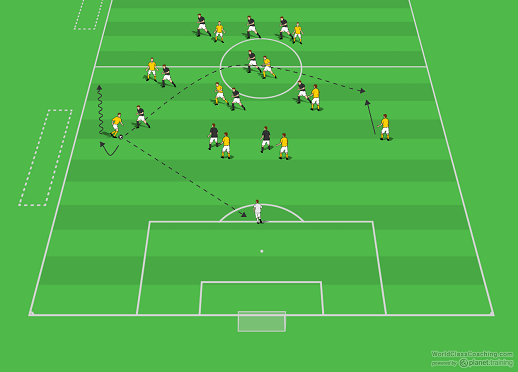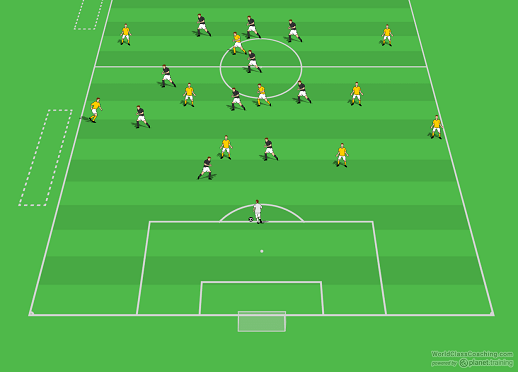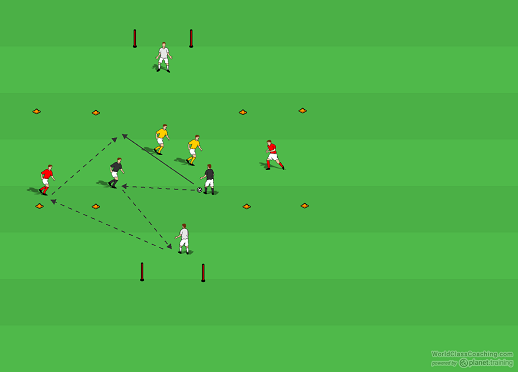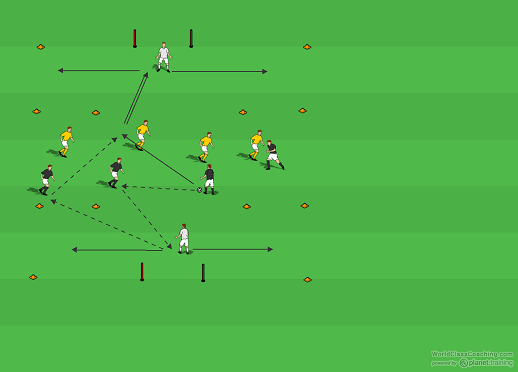By Mike Smith
Seven years ago, I coached a game against a coach with whom I have since become very good friends. We actually run a spring developmental league together and we both coach at smaller private schools who play in the states small school tournament, called the “ All A”. One of the things he did very successfully with his team was use his keeper high up at the top of the box and on the field for possession, the very definition of the “sweeper keeper.”
My side actually beat his team 2 weeks before we got bumped in the All A State Tournament while his team went on to make the finals, coming up just short of winning it all. Because of this, our schools have developed a very friendly rivalry. His use of the sweeper keeper simply caught many teams off guard and is something I have incorporated into my philosophy when I have had the right combination of players to make it work. While I will never personally dedicate my keeper to on field play to the extreme my fellow coach did, there are tons of opportunities teams miss to keep possession and stifle attacks early by just allowing their keeper to stand back on the line and wait to get shot on. Drops back to the keeper when they are at the top of the box, or deeper when they are moving off frame are two simple ways any team can use their keeper to keep possession or burn a team with a good countering long ball. The diagram below shows the basic concept.
The defending side ( yellow ) has just won the ball thus becoming the attacking side. The yellow outside back could turn an dribble up using the wide space and would have options up the line. However, those options are limited and predictable and for a good defensive unit, not a threat at all. Also, the black squad, having just been on attack, has everything marked up pretty well. Why not use the keeper here instead of forcing the advance? Yes, as shown below, the outside back could also pull the long switch, but under pressure? Across the center? It’s a risky, gambling shot at best and the result is basically having an outside back on the sideline with the ball.

Look at what can happen with a good distribution to the keeper. As the diagram below shows, the options are numerous as ANY attempted pressure on the keeper will result in more open options for the possessing team.

A team must have confident players who can hit solid, accurate passes…but if you have those types of players and are not allowing your team to drop the ball back to your keeper, you are missing opportunities to both win games and more importantly, develop players.
Set Up
Set up a 20yd x 20 yd grid ( as shown) with additional 5 x 20 grids on each side. Drop back 10 yds on each end and place two target goals as a reference for the keepers. Two keepers plus six field players work to possess and score. In the central box, two attackers take on two defenders. The players in the outside boxes are neutral and support the keepers and the team in possession. Play starts when one players connects with their team mate inside the box. That team may then drop the ball to the keeper, who should pass it out wide to a neutral. The neutral must play the ball back into the box. If the attacking team wins the ball they may shoot , combine again, or drop it back to the keeper again. The keeper only passes to neutrals and the players in the central 2 v 2 only play to each other or their keeper. The players in the cone boxes must stay there and cannot come out to pressure the keepers. The keepers may use their hands to stop shots but are encouraged to use their feet to stop any low shot attempts.

Progression
Once the sides have gotten the hang of it, play 4 v 4 in the box with unlimited drops to the keeper. IF the keeper cannot / does not play the ball back in with in 3 seconds ( coach should keep count ) a 50 / 50 ball is sent back into the box and play resumes. The keepers should move laterally in their zones ( as shown below ) to support play and keep possession. As a final progression, open up the entire box, allow pressure on the keeper and shooting from any where.

Coaching Points
The focus is on how the players use the keeper to maintain possession. Additionally, the coach should work with the keeper on moving up and back, laterally off goal and being vocal.
By Mike Smith
Currently the Head Coach for University Heights Academy Boys Soccer in Hopkinsville, KY , Mike is in his 14th year as a high school head coach with 23 years coaching experience overall and 34 year as a student and fan of the game. He holds a USSF D License.


